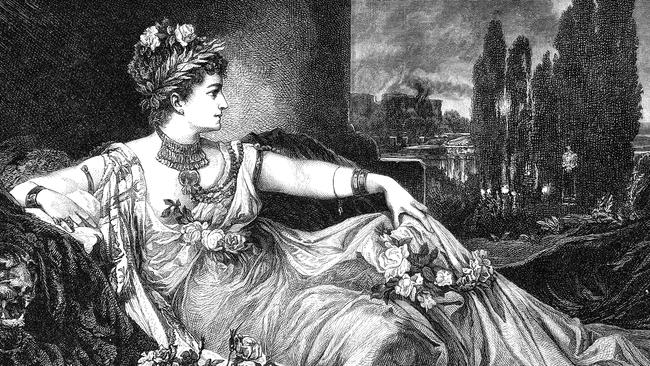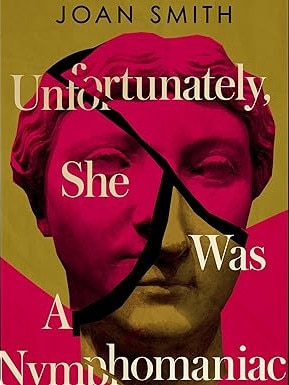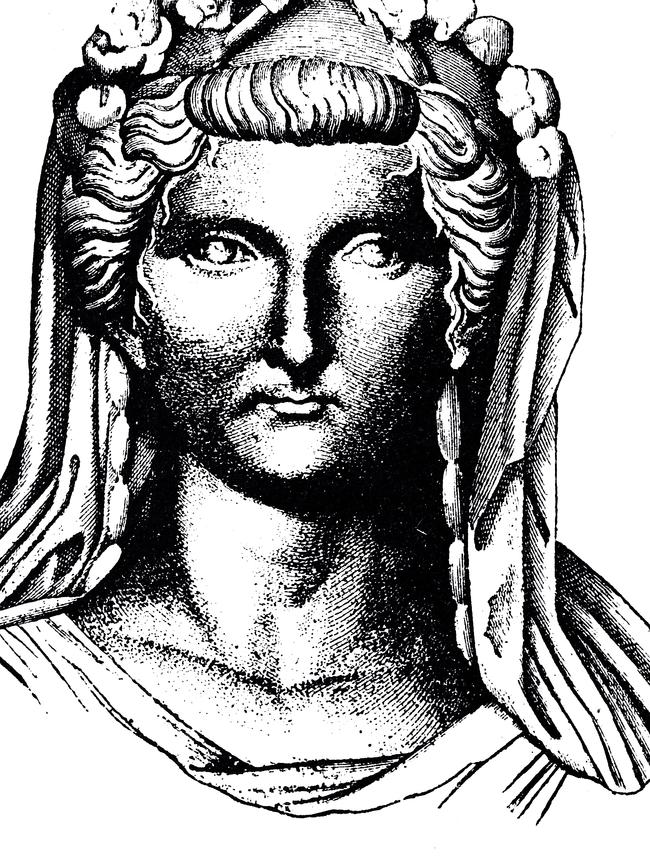Wildly sexy women of Rome revealed in Unfortunately, She was a Nymphomaniac
This revisionist history argues that the women of ancient Rome weren’t quite as nutty as some histories would have you believe.

By day, she was the emperor’s wife, the most admired woman in Rome, who lived in a palace and wanted for nothing. By night, Messalina was a common prostitute who sneaked out while her husband was sleeping, donned a blonde wig and went to work in a sex shop. Trading under the name of She-Wolf, she let men suckle on her gilded nipples and never closed her legs until the owner closed the doors. Then, exhausted but still unsatisfied, she would return home, taking the stench of the brothel with her.
That’s what Juvenal says, anyway.
“Complete fabrication,” Joan Smith retorts, calling the 2nd-century AD Roman satirist’s lurid prose, which sits at the heart of a long polemic verse on why men shouldn’t marry a “masturbatory fantasy”. Far from being a sex-crazed harlot, Messalina was one of many talented women who have been, and still are, wronged by pathetic male writers. And sometimes female ones. Mea maxima culpa.
Juvenal, whom no one should regard as a historian, was not the only Roman to paint her this way. Four decades earlier – about 30 years after Messalina was killed at the urging of her husband Claudius’s advisers for having taken part in a sham marriage with her lover – Pliny wrote that she was so proud of her sexual stamina that she held a contest with a notorious professional prostitute to see who could screw the most men in a night. Messalina, with 25 notches, won by a short head.
Some may find such stories entertaining, perhaps knowing them best from Robert Graves’s I, Claudius novels of 1934 or the 1976 TV adaptation. If so, we are part of a 2000-year problem that has traduced the reputation of the emperors’ wives and daughters. How foolish and credulous we are to believe such biased gossips and slanderers as Suetonius, Tacitus and Cassius Dio!

Smith has spent her career fighting such attitudes. Her 1989 book Misogynies, a collection of essays on the history of women-hating, included one on imperial Rome, but the genesis of Unfortunately, She Was a Nymphomaniac: A New History of Rome’s Imperial Women came from the British Museum’s 2021 exhibition on the emperor Nero, which claimed that he was not the sadistic tyrant painted by history but a genius showman loved by the people. Never mind that he was implicated in the murders of his aunt, mother, two wives and his sister-in-law, he was just a sensitive young man who was smeared by the jealous senatorial class once he was safely dead. I agree with her: it was nonsense, but then I am happy to believe Suetonius and co. Never let the truth get in the way of a good story. The museum’s show fitted in with the revisionist treatment of other ancient bastards – Augustus was a great statesman, Tiberius a masterly administrator, Claudius an intellectual etc – and there is nothing wrong with Smith giving the same redress to 23 of their wives and daughters. She argues passionately and credibly that these men were in fact “sexual predators and callous abusers”, too often given a free pass.
Her narrative has a brutal symmetry, beginning with one emperor, Augustus, effectively raping, she says, another man’s pregnant wife, and ending with his great-great-grandson, Nero, murdering his own wife and their unborn child with a kick to her stomach. Some historians have made light of this, claiming to Smith’s disgust that it was an accident and that Nero loved Poppaea so much that he went out and found a young lad who looked like her, had him castrated and slept with him, thus proving his affections. Hmmm … Smith is surely right to observe that this thuggery was in character for a psychopath who liked to use strangulation as part of sex and plotted to murder his mother with a booby-trapped boat. But to return to the beginning – this parade of cruelty and misogyny got under way when Octavian, later Augustus, evicted his second wife, Scribonia, from their home on the day that she gave birth to their daughter, instantly replacing her with Livia, the heavily pregnant wife of a political rival. Three months later, just three days after Livia had given birth, Octavian married her.

According to the traditional history, rejected by Smith as incredible, Livia then embarked on a career of despicable crime, arranging the removal of any and all threats to her son, Tiberius, becoming emperor. This included his second wife, Julia, that child of Octavian and Scribonia who had been married off at 14, widowed before she was 16, married again to her father’s much older best friend at 18, then forced to marry the morose Tiberius, who neglected her.
No wonder Julia sought the company of other men, allegedly having sex in full public view in the Forum – although Smith insists she just had lots of male friends. She calls her the Princess Diana of her day who only had to be seen with a man to be suspected of adultery. Augustus certainly believed the rumours, and had his daughter exiled to an island in the Tyrrhenian Sea where she finally died of starvation. She would not be the last member of that family to die on Pandateria.
Smith puts a lot of the blame for the reputation of Livia the murderer and Julia the nympho on Robert Graves. Many will recall the scene in I, Claudius where Brian Blessed’s Augustus gets confessions from a line of senators before bellowing: “Is there anyone in Rome who has not slept with my daughter?” Smith argues that if Julia had been so prolific with her favours, it is surprising she did not have more children out of wedlock.
“The Claudius novels are a misogynist’s fever dream, written by a man obsessed with and fearful of female desire,” she writes. Graves had PTSD from the war, married a feminist who, according to him, ascribed all the wrong in the world to men, and then ended up in a complicated menage a quatre that skewed his view of women and influenced his work.
“The Julio-Claudian women deserve better,” Smith writes. She certainly puts up a diligent attempt to correct the record, and no one can deny after reading it that the life of a woman in ancient Rome, even a very wealthy and well-connected one, was based on control by men and was often very dangerous. But is it very wrong still to admire Graves, a novelist not a historian, for writing an exuberant, colourful story in which the women could behave just as badly as men? The women in Graves’s take on the history are not wronged but wonderfully wicked.
Unfortunately, She Was a Nymphomaniac: A New History of Rome’s Imperial Women






